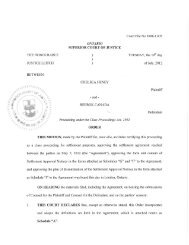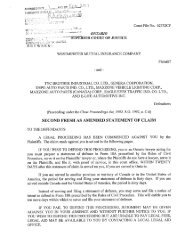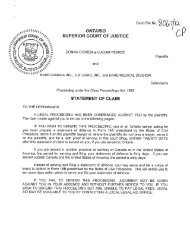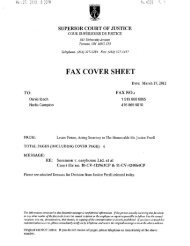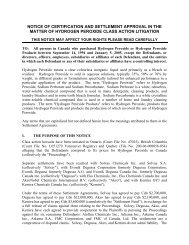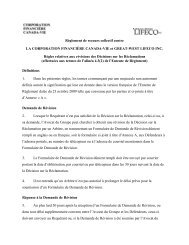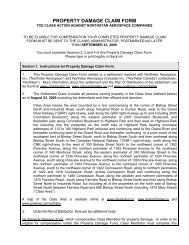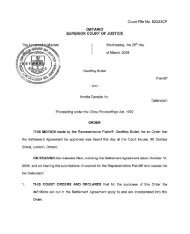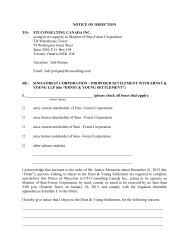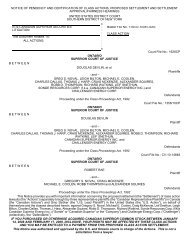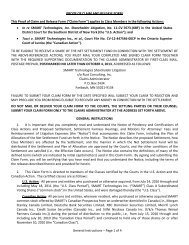Gariepy v. Shell Oil Co. - Classaction.ca
Gariepy v. Shell Oil Co. - Classaction.ca
Gariepy v. Shell Oil Co. - Classaction.ca
You also want an ePaper? Increase the reach of your titles
YUMPU automatically turns print PDFs into web optimized ePapers that Google loves.
Punitive Damages10. In light of the findings with respect to the common issues, is this anappropriate <strong>ca</strong>se for punitive damages?" 52 Those ten common issues could fairly be combined into the following four issues:(a)(b)(c)(d)Do the defendants owe a duty of <strong>ca</strong>re to the plaintiffs with respect to theirproducts and did they breach that duty of <strong>ca</strong>re?Did the defendants owe a duty to warn the marketplace about any defect intheir products and did they breach that duty to warn?If the defendants' products are unsuitable, are the plaintiffs entitled tomitigate their damages by replacing their systems?Is this an appropriate <strong>ca</strong>se for an award of punitive damages? 53 The question on a motion for certifi<strong>ca</strong>tion is not simply whether there are common issues raisedby the claims advanced. There are, almost by definition, always going to be common issues raisedby any proposed class action. Rather, the issue is whether the resolution of the proposed commonissues is going to move the litigation forward to a sufficient degree so as to justify the certifi<strong>ca</strong>tionof the action as a class proceeding. An important consideration in this regard is whether anyindividual issues that will remain for determination after the common issues are resolved are limitedor whether what remains to be determined is sufficiently extensive such that the determination ofthe common issues essentially marks the commencement as opposed to the completion of theliability inquiry - see Abdool v. Anaheim Management Ltd. (1995), 21 O.R. (3d) 453 (Div. Ct.) perMoldaver J. at p. 475. 54 How signifi<strong>ca</strong>nt must the contribution of the resolution of the common issues to the overalldetermination of liability be in order to satisfy this requirement for certifi<strong>ca</strong>tion? The plaintiffs relyon the decision in Carom v. Bre-X Minerals Ltd. (2000), 51 O.R. (3d) 236 (C.A.) where MacPhersonJ.A. said, at para. 41:"Second, the courts have also been wary of setting the bar too high on the commonissues factor. In many <strong>ca</strong>ses, the Ontario courts have stated explicitly thatcertifi<strong>ca</strong>tion should be ordered if the resolution of the common issues wouldadvance the litigation. Resolution through the class proceeding of the entire action,or even resolution of particular legal claims in the action, is not required." 55 However, Mr. Justice MacPherson's view, of what he subsequently characterized as the "lowbar" for the common issues, must be read in the context of the later decisions of the Supreme <strong>Co</strong>urtof Canada on this issue. In Western Canadian Shopping Centres Inc. v. Dutton, supra, Chief JusticeMcLachlin, in discussing the requirement of common issues, said, at para. 39:



